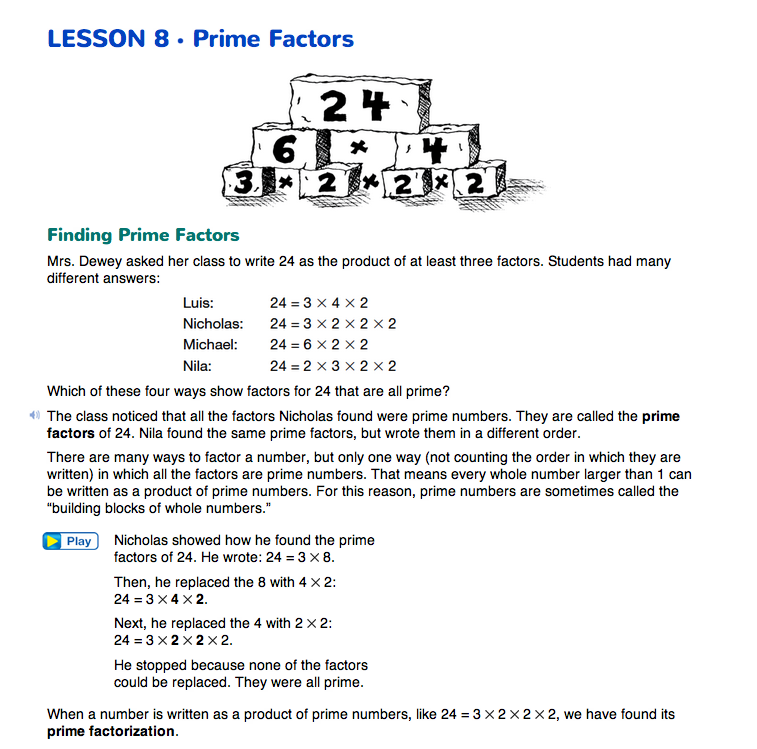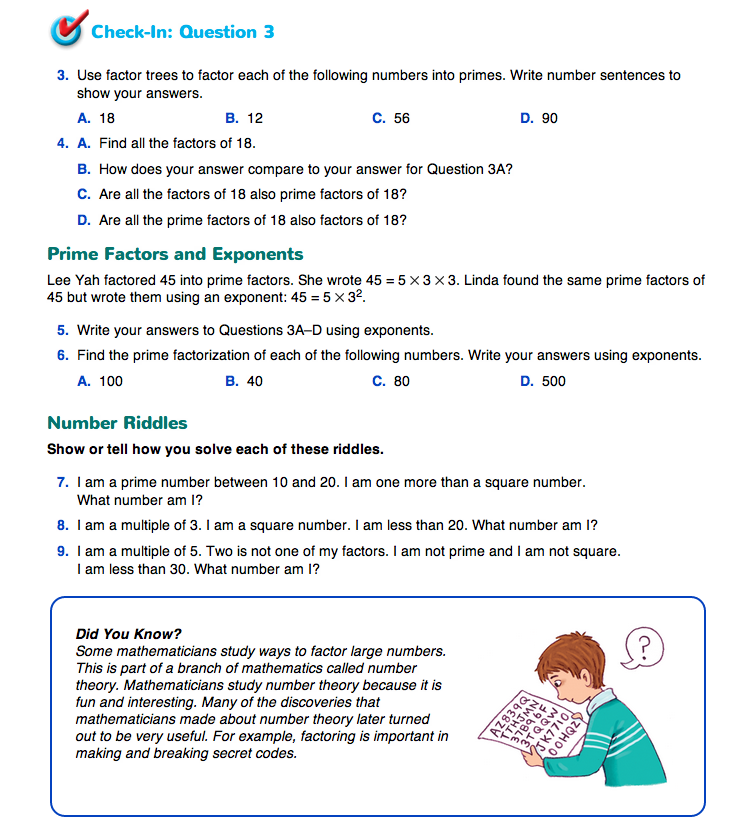Prime Factors
Est. Class Sessions: 2Developing the Lesson
Part 1: Finding Prime Factors
Find Factors of Composite Numbers. Have students work with a partner on this task:
- Find as many different ways as you can to write 36 as a product of three or more factors.
Possible responses include:
36 = 3 × 4 × 3
36 = 3 × 2 × 6
36 = 9 × 2 × 2
36 = 2 × 2 × 3 × 3
Note that the last example is a number sentence that renames 36 as a product of primes. If some students find factors that are all prime numbers, ask them to tell how they found their answers.
If none of your students find all prime factors, choose one of their answers and ask:
For example, in the sentence 36 = 9 × 2 × 2, the 9 can be factored into 3 × 3. The sentence then becomes
36 = 3 × 3 × 2 × 2.
Ask students to work with the same partner to complete the following:
- Write 24 as a product of at least three factors. (Possible responses include
2 × 3 × 4, 2 × 2 × 6, 2 × 2 × 2 × 3.)
As pairs of students finish writing their products, ask:
Have students share their number sentences with the class.
After at least two students share their number sentences, ask:
Ask students to read the vignette in the Finding Prime Factors section of the Student Guide. After reading Nicholas's explanation of his strategy, ask students to compare Nicholas's strategy to their own.
Make Factor Trees. Show the class how to use a factor tree to organize the work in a search for prime factors. Draw the factor tree that Mrs. Dewey drew on the board as shown in the Student Guide. Have a student show how each step of the factor tree matches with each of Nicholas's steps. Then ask a student to explain each step of Nila's factor tree. Ask another student to finish the factor tree that John started in Question 1. See Figure 1.
The Prime Factors pages in the Student Guide give examples of factor trees for 24, starting with 3 × 8, 6 × 4, and 2 × 12. For additional class practice, work together to make factor trees for 30 and 40.
When students are ready, ask them to answer Questions 2–3, which provide additional practice with factor trees. Students can discuss their solutions with partners.
In Question 4, students distinguish between finding all the factors of a number and finding the prime factorization of a number. Clarify for students the meaning of each. See Content Note.
Use Exponents. Students practice using exponents to write prime factorizations of numbers in Questions 5 and 6.
Assign the Factors and Primes section of the Homework page in the Student Guide after Part 1.


















